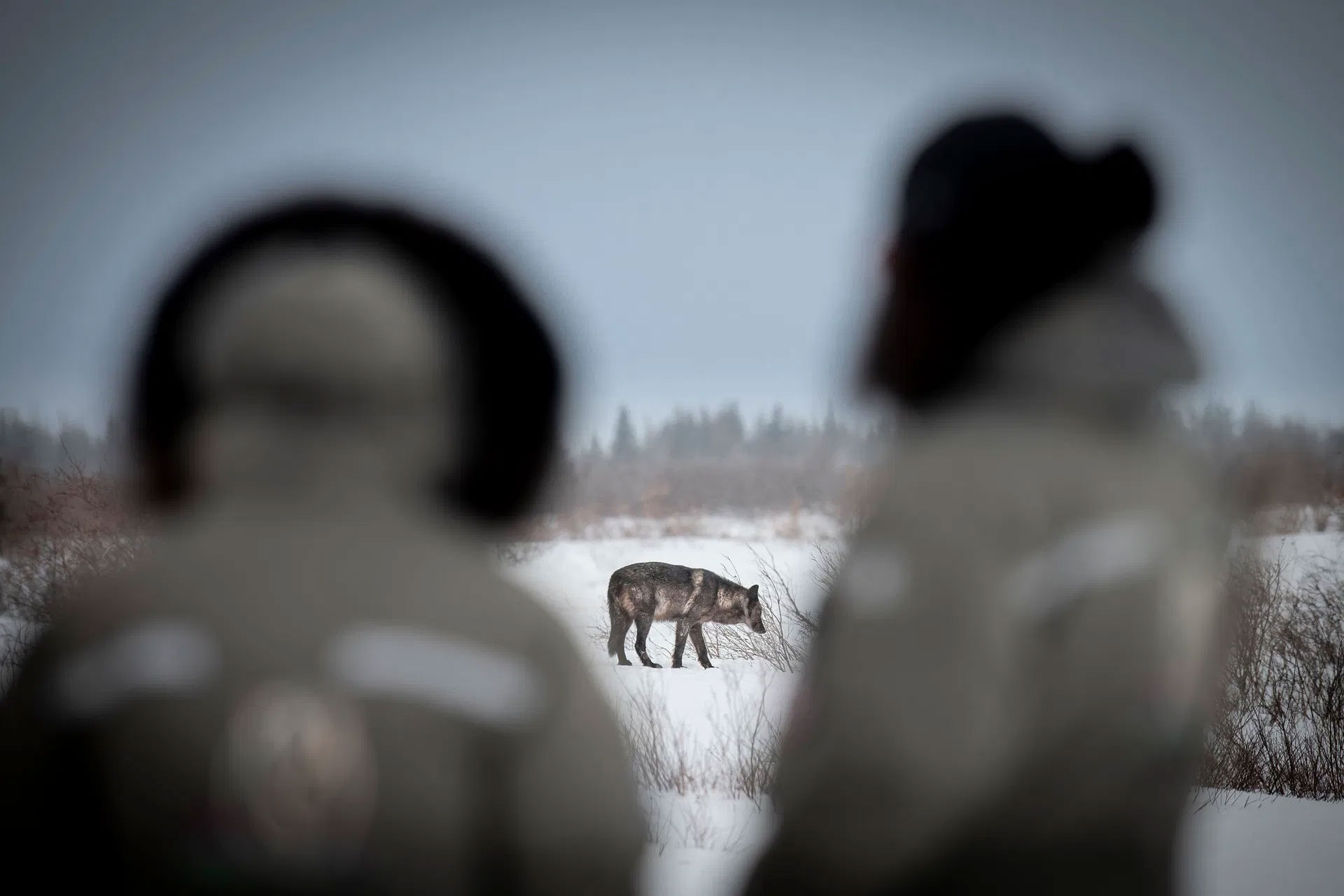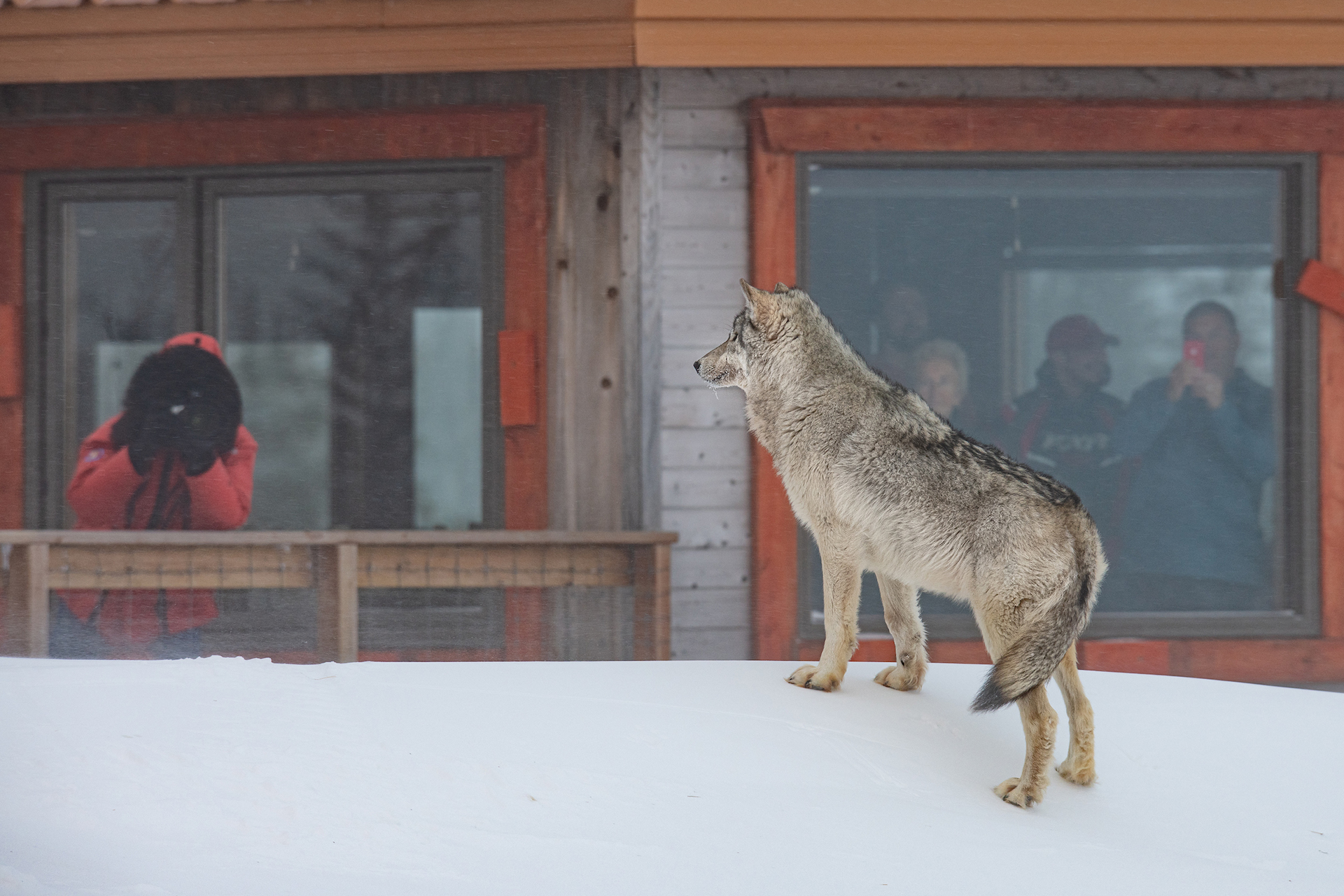There’s a magical place in northern Canada, at the intersection of the southern Hudson Bay and the Boreal Forest, where polar bears and wolves cohabitate. This otherworldly location, also known as the Kaska Coast, is where our Nanuk Polar Bear Lodge is located.
For 10 years, we’ve offered polar bear safaris at this lodge, and now we’re launching our first wolf safari: Cloud Wolves of the Kaska Coast.
Developed in partnership with National Geographic photographer Jad Davenport, this citizen-science safari will give guests the opportunity to observe, track, and photograph wild gray wolves. Jad has spent a lot of time at Nanuk and states that there’s no better place in the world for wolf photography.
“I’ve photographed wolves in Yellowstone, Denali and the Yukon, but the encounters there are distant, and you’re usually shoulder-to-shoulder with dozens and dozens of other people; it doesn’t feel wild. At Nanuk it’s just you and your fellow guests watching as the wolves hunt, play, court and, of course, howl, often right in front of the lodge. It’s the only place I’ve ever had wolves approach me when I was on foot and get to within a few meters; I had to shoot photos with a wide-angle lens. That never happens anywhere else.”
Taking place in late November, this safari will also offer the chance to see and photograph polar bears if they haven’t yet headed out to the sea ice.
Wolves are a highly revered and enigmatic species, and this safari will give guests a greater understanding of their behaviours during daily excursions and guided observations.
Our unique location and impeccable track record for ethical wildlife viewing have allowed us to develop this one-of-a-kind safari.
Nanuk Polar Bear Lodge is hundreds of kilometres from any town or permanent settlement, so these wolves are not habituated to humans, nor have they had reason to be fearful of us. Our non-invasive approach to wildlife encounters means they, and all other area wildlife, has taught them that we are not a threat.
The wolves that live along the Kaska coastline are southern grey wolves, or canis lupus nubilus. Nubilus is Latin for ‘cloudy,’ a great descriptor for these beautiful animals whose coats come in all shades of gray, reminiscent of clouds.
These cloud wolves are quite large, possibly some of the largest in the world, and among the least studied. Anecdotal observations over the years have given us insights into the number of packs that live along this coastline, as well as pack and territory sizes. Now, with the help of Jad and our team of naturalist guides, we’ve put together a program to collect measurable data.
Jad has worked on citizen science expeditions around the world. From coral reef restoration in the Maldives to whale identification in the Antarctic, he’s been on the front lines for a number of research studies.
On this safari, guests will have the opportunity to help us pioneer field studies on these wolves, answering questions such as: How many wolves inhabit the area? What influences their population? How many packs are there? Territories? What is their impact on the moose population? What is the relationship between wolves and polar bears? We’re also looking at possible DNA collection through scat and hair snares, track casting and audio studies.
We’re very excited to have Jad with us once again for this groundbreaking expedition!
Join us this fall and answer the call of the wild wolves.














I’m very excited to launch this wolf study with Churchill Wild. The wolves have always been such a highlight of my visits to Nanuk. Apart from us humans they are the most wide-ranging mammal on the planet and yet they are so rarely encountered in truly wild settings where they have no outside pressure on them. There’s nothing quite like hearing wolves howling under the Northern Lights.
Looking forward to this Jad! Should be yet another awesome adventure! Thanks!